Fixing Broken Glass On A Solar Panel (Round Two)
A few months ago I wrote an article on repairing the broken glass on a three hundred and twenty-five watt solar panel that a friend of mine picked up for me at a scrap metal yard for the low price of twelve dollars USD. After some inital testing of the panel's voltage to make sure it was still functional I decided to try sealing the shattered glass on it with polyurethane which I detail in the following articles:
How to fix broken glass on a solar panel: https://steemit.com/off-grid/@jacobpeacock/how-to-fix-broken-glass-on-a-solar-panel
Video explanation of how to fix broken solar panel glass: https://steemit.com/off-grid/@jacobpeacock/video-explanation-of-how-to-fix-broken-solar-panel-glass
However when I did the repair I used some water based indoor polyurethane because I accidentally purchased the wrong kind and then decided to try it anyway as an experiment. The results were that after roughly six months the polyurethane started to break down and flake away but it did prove that water based indoor polyurethane would work as a temporary solution and allowed me to gauge just how long said temporary solution might be expected to last.
So I decided to repair the broken glass properly which meant doing it a second time with an oil based outdoor polyurethane. The hardest part of my second repair job was removing the old polyurethane which I did with three different methods. First I peeled away as much of the old polyurethane as I could by hand which was remarkably easy but very time consuming but I managed to remove about half of it in that manner. I then used paint thinner and a coarse rag to start removing the rest and although this worked it was even more time consuming especially since there were five coats of the original polyurethane to 'wipe away'. In the end I decided to use a razor blade paint scraper and that was incredibly efficient time wise and did the job rather nicely. I was initially concerned that the paint scraper would leave scratches on the glass but that turned out to not happen but I did have to take care with the pitted areas of the broken glass so as not to gouge them out with the razor.
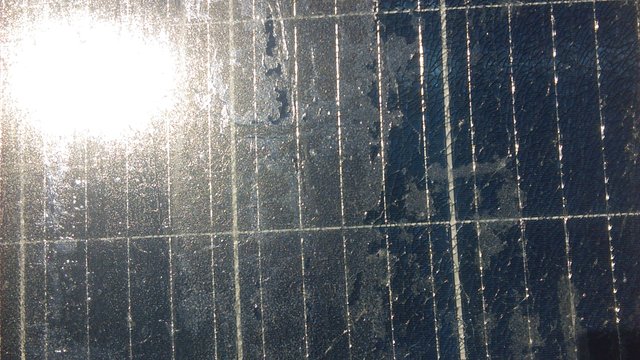
The old water based indoor polyurethane breaking down and getting 'milky' looking.
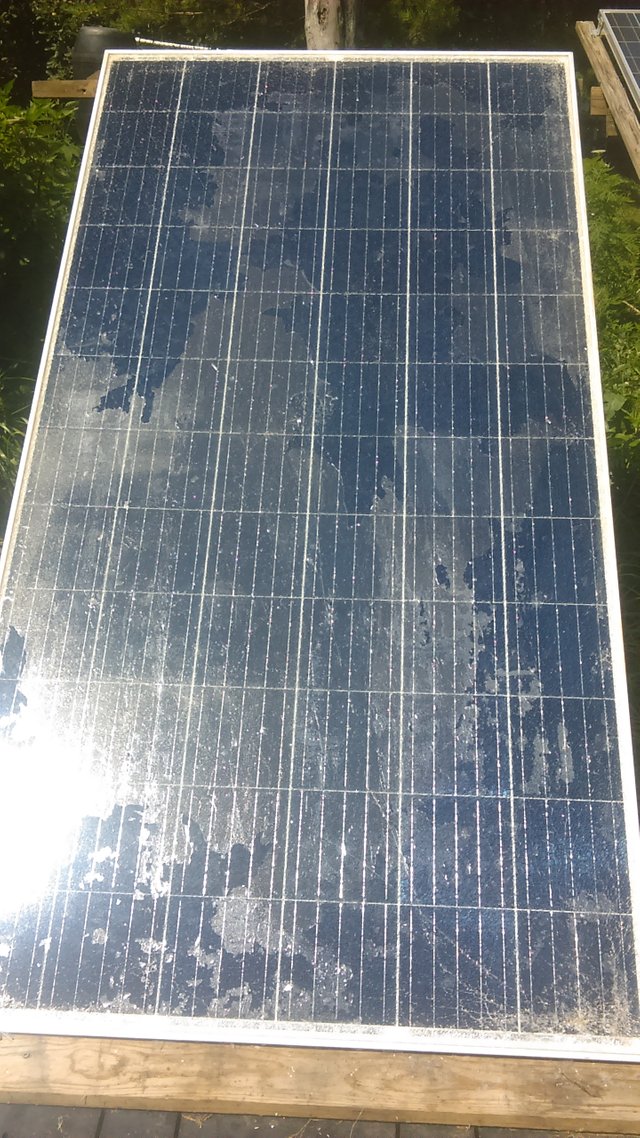
This is how much of the old polyurethane I was able to remove by hand without tools or solvents.
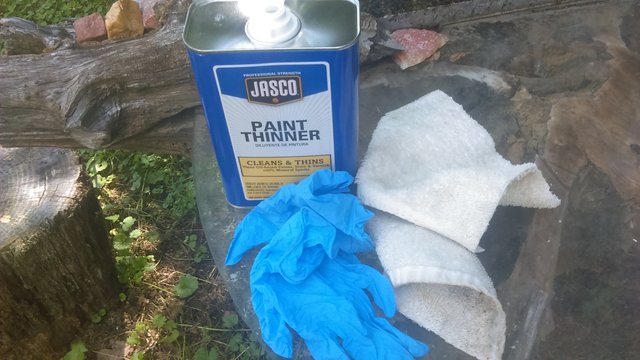
This is the paint thinner and rag that I used to remove some of the old polyurethane.
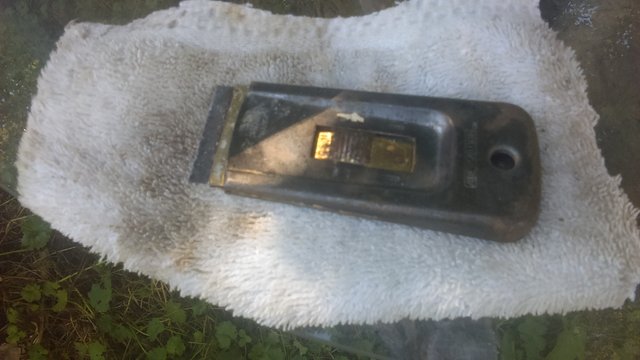
This is the razor blade paint scraper that I used that made removing the old polyurethane much easier.
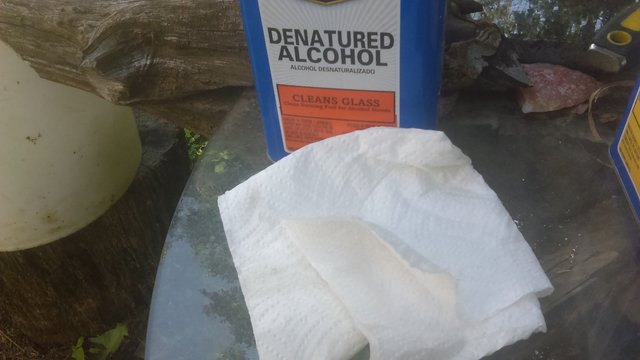
This is the denatured alcohol and paper towels that I used to clean the panel after all the old polyurethane was removed.
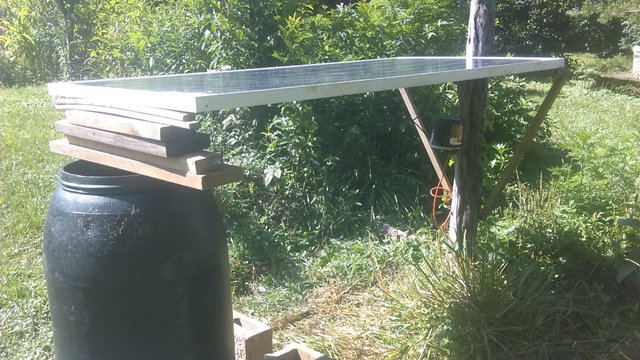
I decided to work on the panel where I have it installed at and used a barrel and some lumber to level it out and no I did not even disconnect it from my power grid before working on it.
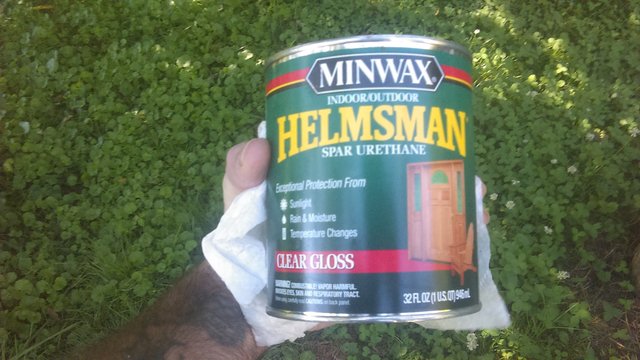
This is the outdoor oil based polyurethane that I used to seal the panel.
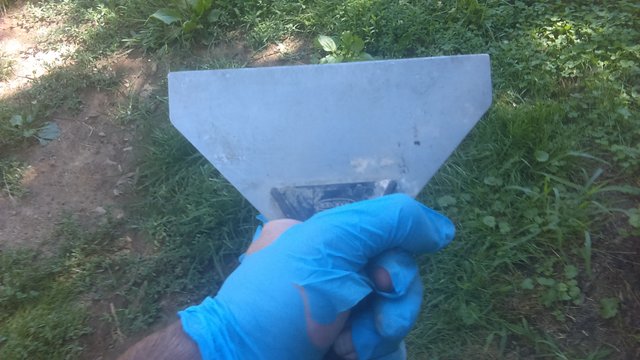
I could not find the plastic putty knife I used the first time I sealed the glass so I used this metal one instead.
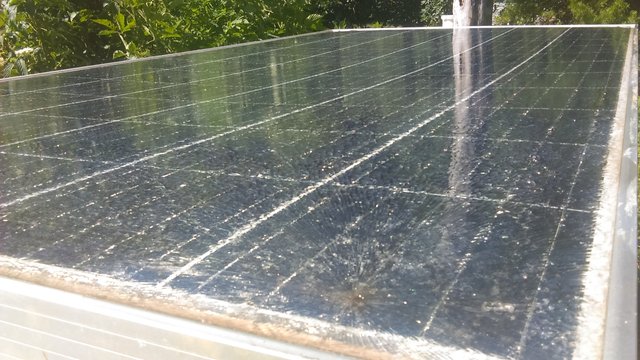
This is how the panel looked after one coat of the new polyurethane.
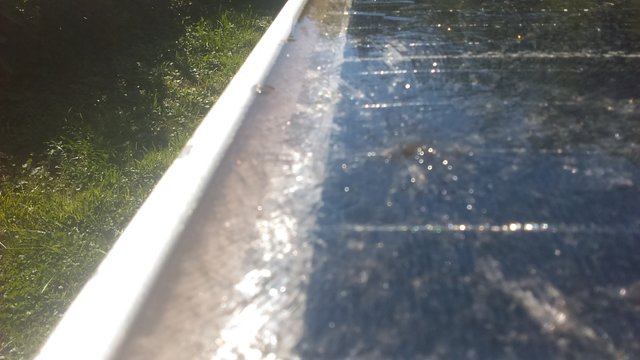
As with the first time I sealed the glass on this panel I was meticulous in working the polyurethane into the area where the glass meets the aluminum frame to create a good seal.
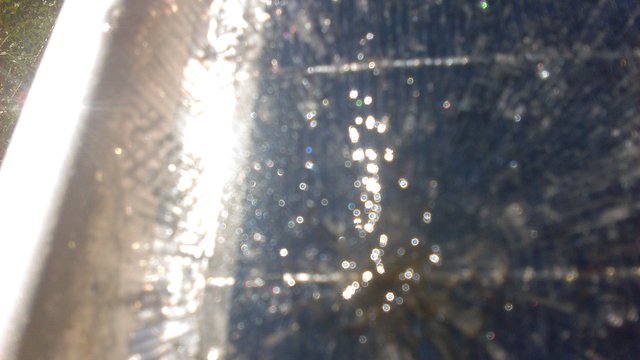
I was careful to work in the polyurethane very well on pitted areas like this one.
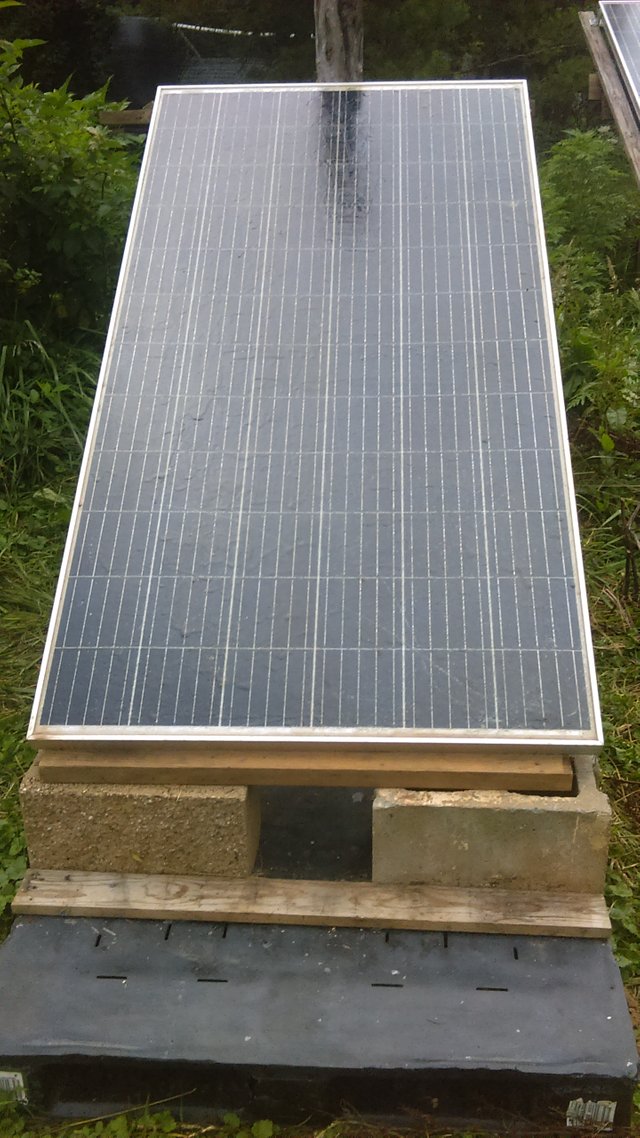
This is the panel the following day after all three coats of the new polyurethane had cured.
@jacobpeacock It now looks like a new panel, this is a good way to buy and fix solar panels. Great job explaining how to fix it.
Thanks @myjob! I like how it came out. :)
You've been visited by @minismallholding from Homesteaders Co-op.
When I saw the title of the post I was half expecting that you'd have to replace the glass. This is a much simpler, and probably much cheaper, fix. Does the polyurethane impair the productiveness of the panel in any way?
I've featured this helpful post in the Homesteading - Living Naturally newsletter.
A community marketplace of ethical, handmade and sustainable products available for STEEM, SBD (and USD): https://homesteaderscoop.com
follow: @homesteaderscoop
It marginally affects the solar panel's overall production @homesteaderscoop. I would say somewhere in the one to ten percent range which is not that big of a deal to me personally. Cheers and have a spectacular day!
That really isn't a huge impact. I'm guessing that leaving it would be worse in the long run.
Posted using Partiko Android
I agree @minismallholding the impact is marginal at best. Leaving the broken glass unsealed would have lead to water and moisture getting onto the individual solar cells beneath and damaging them which would make the panel unusable.
Right on and voting! That panel will definitely help you out!
Posted using Partiko Android
Thanks @ganjafarmer! It sure has been helping out. It basically doubles my electricity generation! :)
Yeah mine is just amazing! Solar power for the win!
Posted using Partiko Android
I am glad your solar rig is working out for you @ganjafarmer!
Congratulations @jacobpeacock! You have completed the following achievement on the Steem blockchain and have been rewarded with new badge(s) :
You can view your badges on your Steem Board and compare to others on the Steem Ranking
If you no longer want to receive notifications, reply to this comment with the word
STOPTo support your work, I also upvoted your post!
Vote for @Steemitboard as a witness to get one more award and increased upvotes!